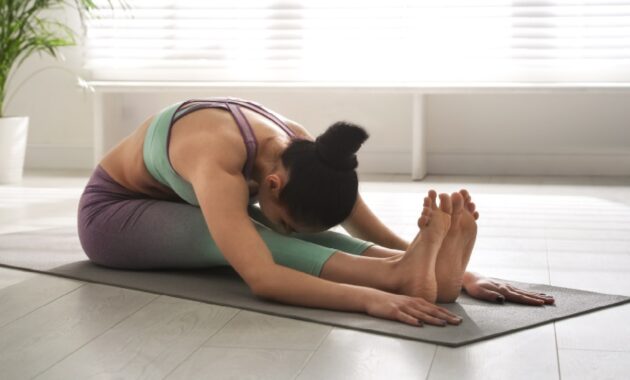Vertigo is more of a feeling of dizziness. It may feel like things around you are spinning or you are moving when you are not. Yoga is often recommended as a complementary therapy for managing dizziness, particularly when it is related to issues such as inner ear problems or stress. Here are some yoga asanas that can help you with dizziness.
During a vertigo attack, finding relief can be as simple as lying quietly in a dim room, which may help to ease nausea and spinning sensations. Yoga can also help to improve overall well-being, reduce stress and enhance balance as well as body awareness, says yoga and wellness coach Shivani Bajwa.
Here are some ways in which yoga may be beneficial for managing dizziness:
• Stress reduction
• Balance and coordination
• Neck and shoulder relief
• Improved circulation
• Mind-body connection

Yoga for dizziness
Yoga may not directly cure underlying medical conditions causing dizziness, but it can bring some relief, says the expert. Here are some poses:
1. Alternate Nostril Breathing or Nadi shodhan pranayama
• Depending on your comfort, you can sit cross-legged on the floor or in a chair with your spine straight.
• Use your thumb to close your right nostril while you inhale through the left one, slowly and deeply.
• Close your left nostril then release your right nostril and exhale slowly and completely.
2. Child’s Pose Balasana
• Spread a mat or towel and kneel on it to do balasana. Sit on your heels, touch your big toes to each other, and then separate your knees to a hip-wide width.
• Take a deep breath, exhale and place your torso in between the thighs.
• As you lift the base of your skull apart from the back of your neck, make sure you stretch the tailbone away from your pelvis’ back.
• Place your torso on the mat and lay your hands down with your palms up.
• Push your shoulders toward the mat.

3. Bound Angle Pose or Supta baddha konasana
• To begin the supta baddha konasana, sleep easily on the mat with your chest facing the ceiling.
• Keep your spine straight, relax your shoulders and make sure there is no strain on the neck.
• Gently bend your knees, bring your feet together, but make sure that your feet remain on the mat.
• Slowly get your heels closer to the pelvic region.
• Exhale contract your abdomen muscles, and hold this posture for about 20 seconds to get maximum benefits.
• Inhale quickly, and then exhale slowly, letting your knees open, thus giving a good stretch to your pelvic region as well as your inner thighs. Hold this pose for 30 seconds, breathing slowly and softly then exhale and slowly come out of the pose.
4. Seated Forward Bend or Paschimottanasana with chair
• Place your forehead on a chair with a a towel on it, providing a soft padding.
• Breathe in then slowly roll up.
5. Corpse Pose or Savasana
• For savasana, place your mat in front of a chair or couch and lie in the center of your mat with your knees bent.
• Lift your legs and place the back of your calves on the chair or couch and rest the back of the arms on the floor with the palms facing upward.
• Put a soft cloth or a blanket under your head and neck so that you can drop down your chin and look toward your heart.
• Place a cloth over your eyes and turn your upper arm so that your skin rolls away from your chest.
• Gently tuck your shoulder blades in toward your back so that the center of your chest is lifted.
Do these asanas for vertigo only after consulting with a doctor.
#yoga #poses #vertigo
